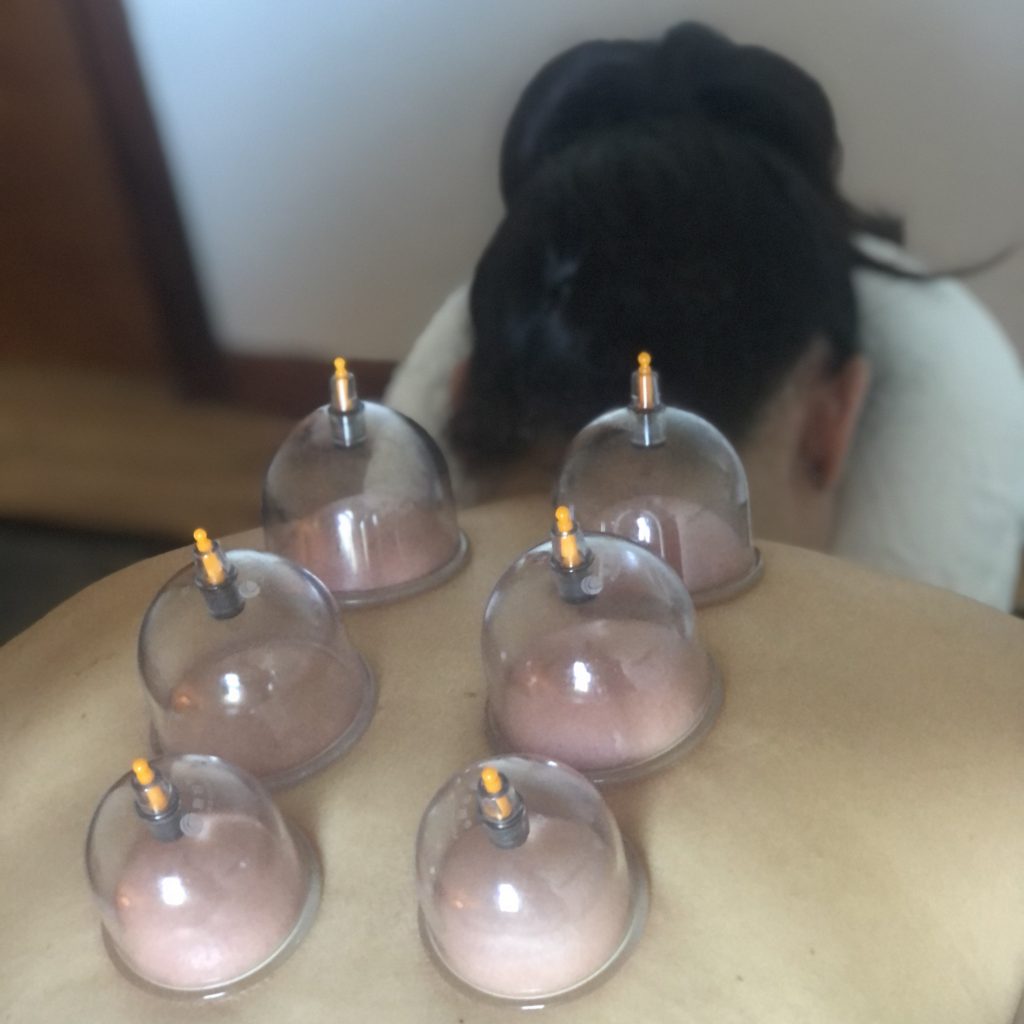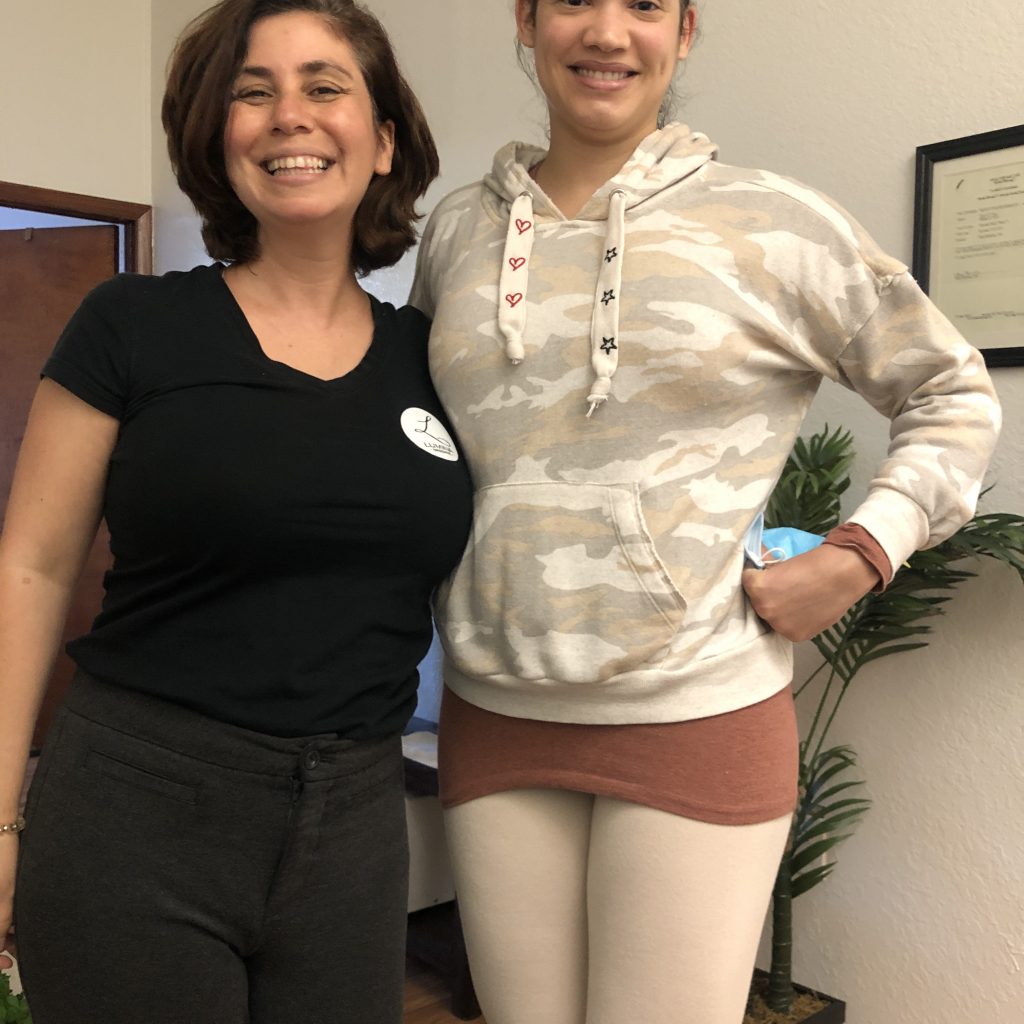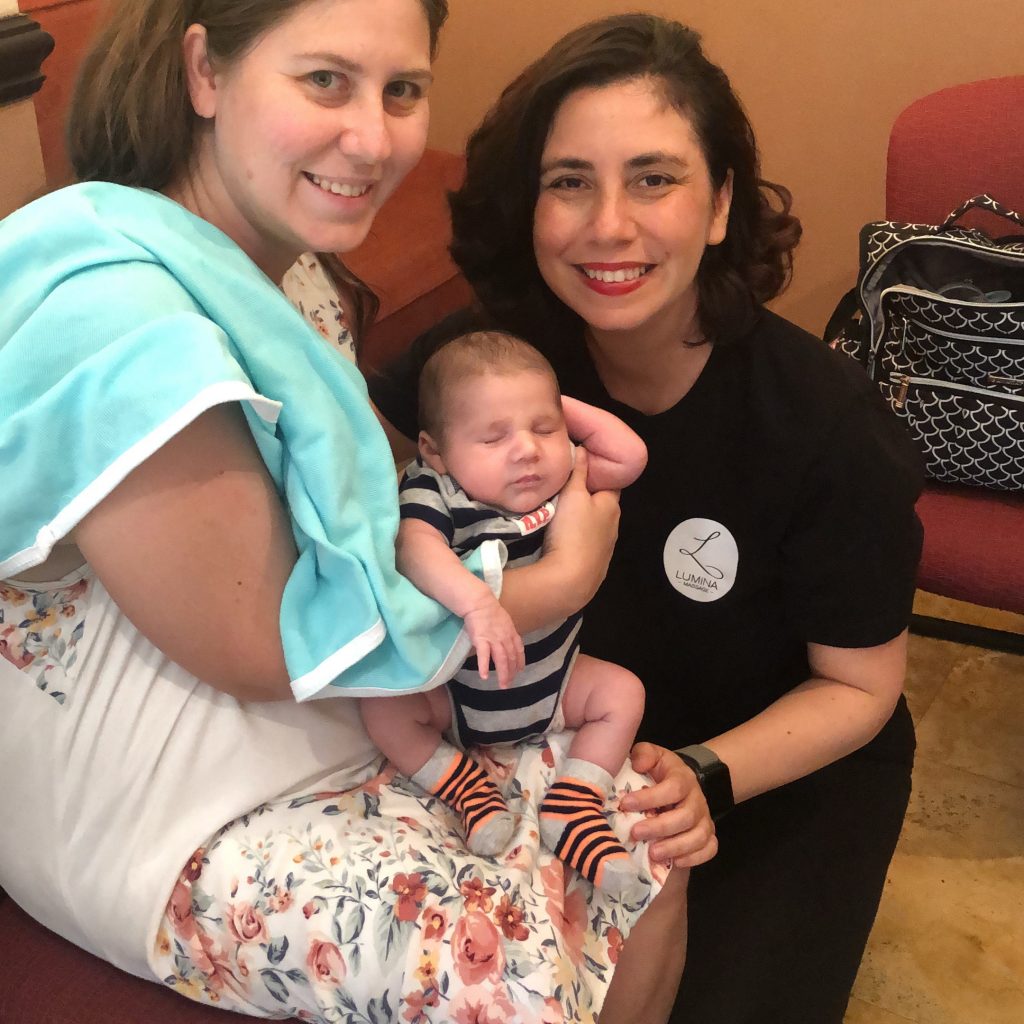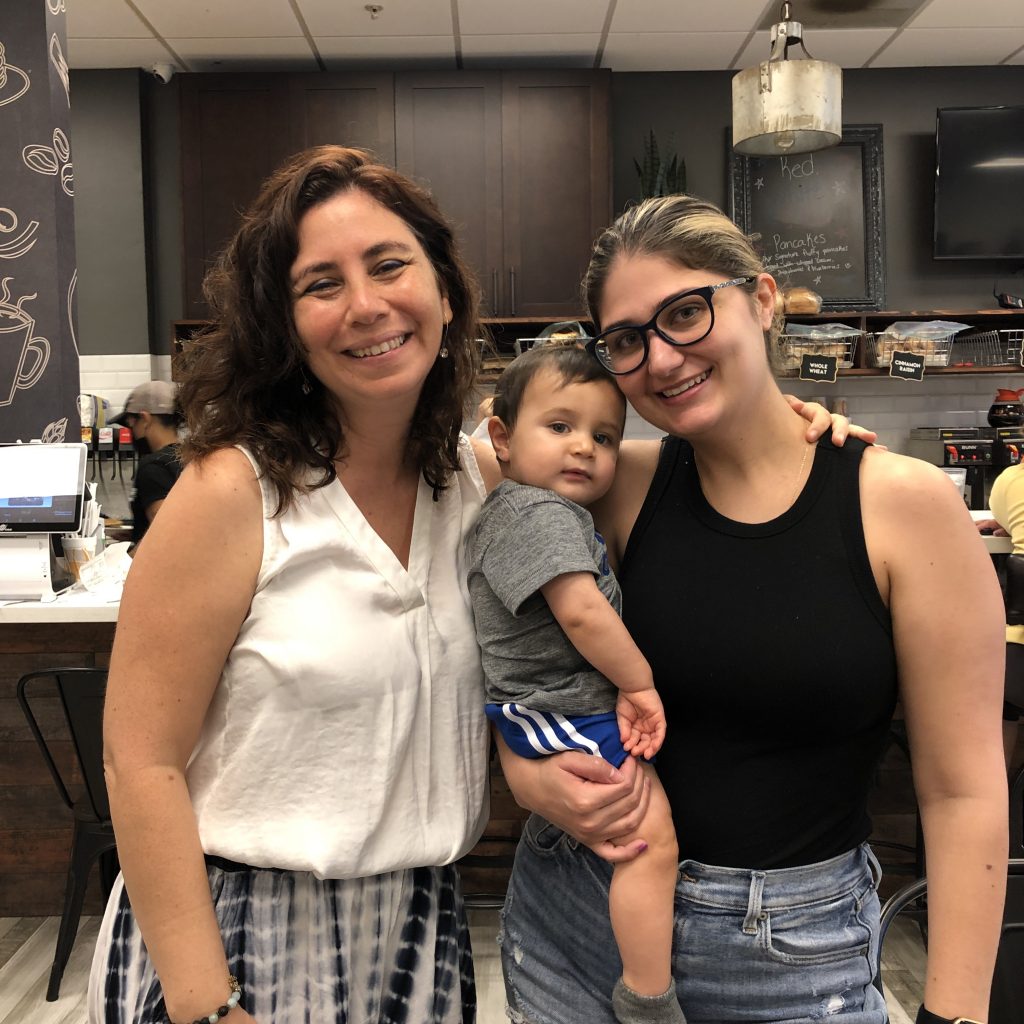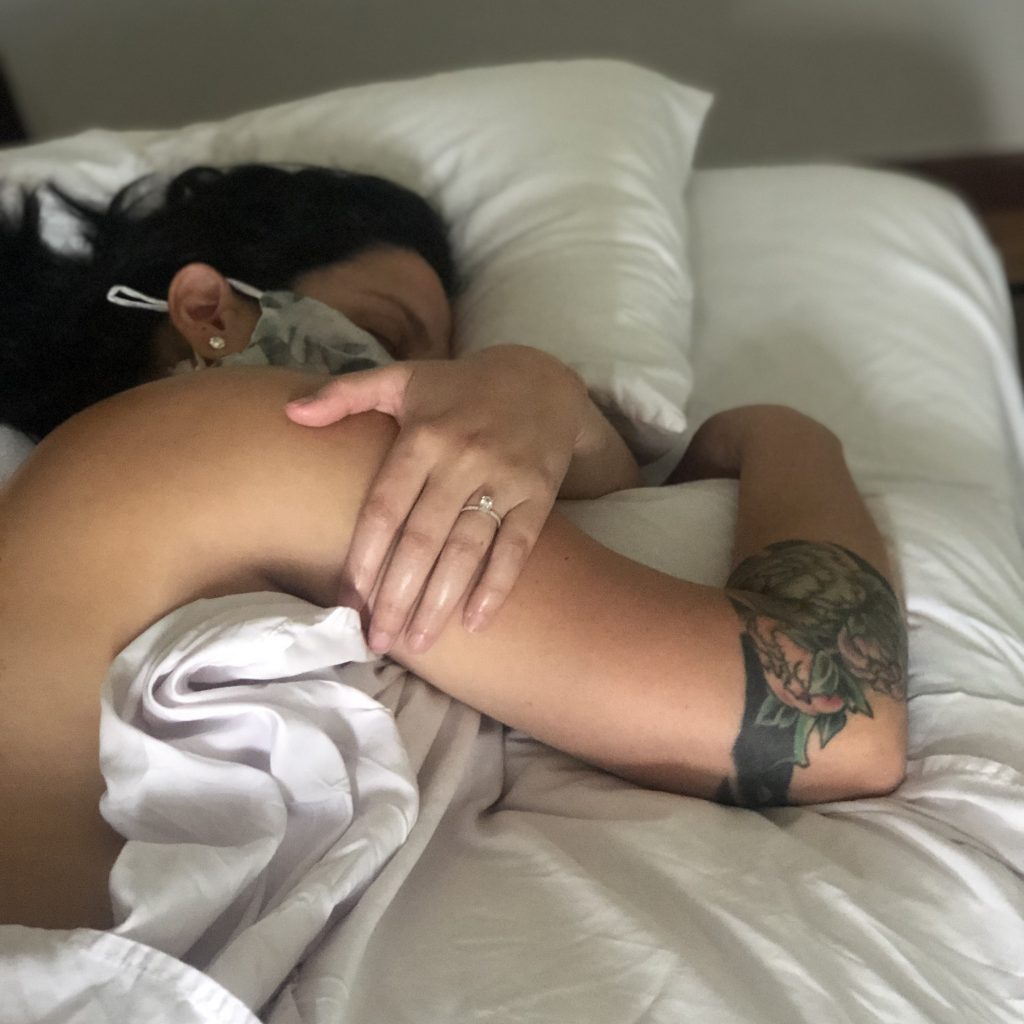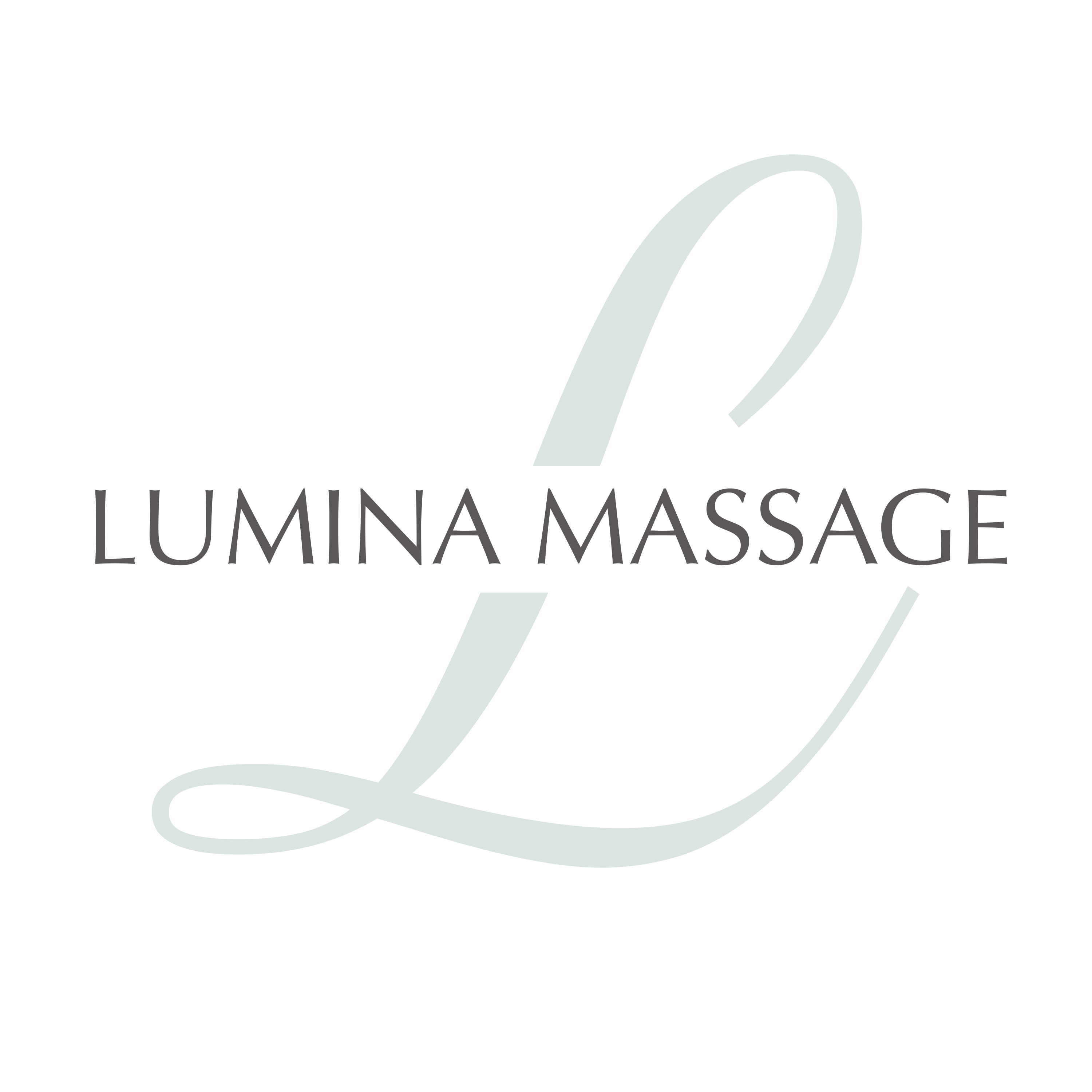Postpartum Massage
Yarenis sat across from me on the espresso-colored couch, her body slack and her eyes squinting slighting as she grinned. “How do you feel?” I asked. “Awesome” she replied. “Even if I don’t have the baby tonight, can I have another massage tomorrow?”
I pulled out the calendar on my phone and we looked at her due date. She planned her induction massage a week earlier and would be 39 weeks tomorrow, so I wasn’t worried.
I smiled. “I’m so happy it helped you, let’s talk about your postpartum sessions.”
“What’s the difference between postpartum and prenatal massage?” she asked.
“Well, it’s recovery therapy for your body focusing on different muscle groups. In pregnancy, a common target is to release the tension in your lower back. In postpartum, the session is mostly designed on releasing the tightness in your upper body and arms, especially if you’re breastfeeding.”
I demonstrated by mimicking a nursing mother and hunching my body forward. A mother of two kids, she didn’t need much convincing and nodded her head, fully understanding.
She left feeling at ease and with instructions on specific home care. I needed her muscles nice and loose for the upcoming birth. We said our goodbyes and she left with her first postpartum massage on the schedule. Below, I’ve listed the most common home care instructions and follow up visit frequency that I’ve seen the best results with.
1. Epsom salt bath for 15-20 minutes
2. Schedule first in-office postpartum massage two weeks past expected due date.
3. Massage sessions should be scheduled every 4 weeks (unless there has been an injury).
Returning to “Regular” Massage
Many women assume that once they give birth they can return to their “normal” massage therapist. I’m not opposed to it but before you do I’d like you to consider some aspects of giving massage to a woman’s body after birth. One year is the average time span a woman’s body needs to fully recover from giving birth. Your postpartum massage should fit to accommodate the recovery you’re experiencing as well as treat the physical pain you may have.
Swelling
Belly
Your first postpartum massage may be anywhere from one day to one month after you give birth. Swelling in your belly is a common sign and positioning for comfort is essential. Visiting a massage therapist that is experienced in postpartum is most likely have experience in pregnancy. If this is the case having a woman lie on her side to receive a massage is a position they are used to. Sports massage therapists or other styles are used to having someone lying facedown and applying deep pressure. A pregnancy cushion may be applied for the swelling belly if the woman prefers to lie face down, however in my experience it adds unnecessary pressure on a recovering belly. To best honor the healing process, I believe a sideline position is best until the swelling subsides. If you’ve had a C-section and still experience discomfort, lying on your side is also a good option.
General Body
A hormone imbalance may cause high levels of sensitivity throughout the nervous system. Similar to when a woman is nearing her ovulation stage, muscles may feel more tender to the touch. This extra level of physical tenderness on the body may cause frustration for the recovering woman. All the more reason for the soothing property of massage for her nervous system to be applied. Much like other people that are not pregnant and yet suffer from hormonal imbalance. A woman recovering from postpartum usually feels an extraordinary sense of fatigue and aching. When this muscular discomfort manifest throughout the body, hormones may be the result of this extra sensitivity. A natural approach to this would be to rectify her meals for healthier foods. Her stress levels must be managed, which is a feat for a mom with a new born! Her body must receive an adequate amount of deep and nourishing sleep to heal. All of these approaches may help in rebalancing her hormones over time. For women that are suffering from more severe symptoms, a visit to their obstetric doctor or licensed midwife may be in order. These medical professionals have the most current medical records of the mother which can help to create the appropriate treatment. Because massage allows the mother to rest, the lowering of her anxiety will decrease.
Mental Health
After your birth you may feel a flood of emotion. Massage therapists that are experienced in caring for women are careful about their choice of words. Kindness and encouragement especially regarding a women’s body and her self esteem will be of great comfort to the strong emotions that will results from hormonal changes. Compassion, patience and sensitivity do not take away from an effective and results-oriented massage. Pain relief can still be accomplished while giving a new mom the emotional support she needs during her fourth trimester.
C Section Scar
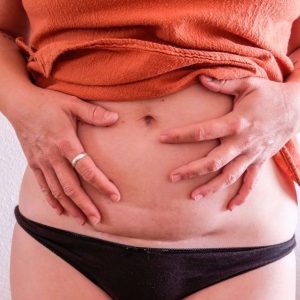
A caesarean delivery (c-section) is a surgical procedure where a baby is delivered by an incision in the mother’s lower abdomen. For the majority of women that desire natural childbirth, experiencing a caesarean delivery is a common source of concern. Women that seek out natural therapies such as massage often lean towards avoiding one, however there is a portion of the population that consent to it. There is no right or wrong and a woman should never feel judgment if she agreed to one. Likewise, she should never be emotionally manipulated with fear tactics by others and or medical professionals to have one without evidence of danger. We recognize that at times the C-section is inevitable such as when the mother or the baby’s life is endangered. Such as when the mother’s glucose levels or blood pressure is too high. There are certain comforts that we are provided when there is the option to do a c-section. It has been noted that when patient care is influenced by profit and provider convenience, c-section rates are common.
As a woman seeking postpartum massage after this major surgery, you should always include scar tissue release. The average time for a surgical incision to heal is two to three weeks. Sutures must be removed and all scabs fallen away before the area can be massaged. Scar tissue begins to form just a few days after surgery and may take up to a year to fully mature.
When an incision is made into your body and then stitched, a scar begins to form on the surface and underneath the incision. If neglected, it will harden often times leaving a woman with a nagging pain and discomfort for decades.
If your c-section was not planned, a sudden rush to surgery is a type of birth trauma that registers deep within the human psyche. The body records the invasion of what occurred within the subconscious. The rise of mommy makeovers has minimized the seriousness of recovery after surgery. We encourage all women to heal properly after every one.
For those with a history of unplanned c-section receiving massage on your scar may bring memories of a stressful time where you were wheeled rushed into an operating room. Despite the well intentions of the medical intervention if you hoped to avoid a c-section it is a subconscious intrusion against your original wishes. Your body holds onto the memory of the resistance, fear and pain. Often times feelings of sadness, disappointment and even anger are associated with a c-section delivery. Nursing staff at hospitals may encourage you to massage your scar at home but women are unable to due to lack of proper instruction, demonstration or education on how to massage the scar.
This is why c-section scar massage may be the gateway to physical and emotional healing from your post surgical experience. Receiving massage along your scar may help you to confront your pain when you’re guided by a massage therapist that is sensitive to a postpartum clientele. I always believe that mothers should explore the possibility of birth trauma. Receiving a combination of massage and postpartum focused mental health therapy to work through the strong emotions that are often suppressed. When offered with dignity and gentleness massage brings out these emotions in a positive light if you are willing and ready. Feeling the movement of the scar may allow you to forgive and heal on all aspects. Even women that gave birth many years ago would benefit from c-section scar releasing massage. The hurt that may surface when this area is touched in a caring and compassionate way may also validate the fear you may have experienced.
After your surgery, tend to your scar in terms of healing. Again, once the scabs and or sutures have fallen off and new skin begins to form, this is the time that massage may be applied. Normally, this occurs two weeks after your surgery, but you may always check in with your doctor for clearance. There is a window of time when the skin is just supple enough to prevent hardening and pain in the future. Receiving scar tissue massage with your therapist may boost your confidence to begin doing this in your own home. I have found that some women are unable to until they receive it. Some carry shame with the scar or a type of repulsion making it difficult to massage until another person allows them to experience it. If you have any doubt the incision has not healed completely or see infection, massage is not advised.
When it is safe, massage to the c-section scar and application of certain healing topicals can also minimize the appearance of the scar. A welcome aspect that help boost self confidence in body image for some women. A c-section is a major surgery and not to be taken lightly. The majority of women that give birth vaginally and natural may have a postpartum massage much sooner than a woman that had a c-section. The recovery time is longer and more painful. However there is no doubt that massage can help a woman recover faster overall after birth.
Increasing Milk Supply
Women that suffer from engorgement due to a lack of flow when breastfeeding, hardness of the breasts or have a tendency for mastitis would greatly benefit from postpartum massage.
Increased circulation of breast milk is increased when a woman receives full body massage therapy with long flowing strokes to increase over circulation. Direct contact of the breast is helpful but not necessary. Home care techniques may be applied in the privacy of the mother’s home by a relative, close friend or spouse. Your massage therapist should be able to direct how to massage your breast at home or if you’re comfortable, it many be applied during your appointment.
There is nothing lewd or sexual about breast massage. It is a medical intervention when breastfeeding is painful and can be used as a preventive measure against the conditions mentioned above. During your massage appointment many nursing mothers feel comfortable with a supported breast cushion. A vinyl covered foam with cut outs for the breast area. Placing the breast in these openings offers a great source of relief.
Bed Sharing and Back Pain
Bed Sharing is one of the top three reasons for muscular back pain among parents of young children. It doesn’t matter how large of a mattress you buy, most children move more than adults during their sleep leaving parents inching closer to the edge of their bed throughout the night. When you are continuously pushed, kicked and slapped during the night it robs you of quality sleep and productivity the next day. Also, the awkward positions you place your body in leave you unnecessarily sore. You may feel sadness, guilt or anxiety leaving your child sleeping alone in another room. If this is especially difficult for you may practice co-sleeping in the same room (room sharing) and purchase a small cot and place it next to your bed. This habit is best when starting with newborns. Once your children are accustomed to lying in your bed with you it is very difficult to stop. If possible, avoid nursing in bed and find different areas in the bedroom to spend time with baby. Nursing chairs and bassinets are ideal. Quality time and physical touch are wonderful to bond but bed sharing is a habit that will give you years of unnecessary muscle pain. Whether you’re a mom or a dad, if you visit a massage therapist make certain you share with them if you are bed sharing with your child. They may be a wonderful source of inspiration to help you see the importance of breaking this habit for your own health. Of course for older kids the temptation of crawling into your bed at night may be too much. At this point you should decide as a family what’s best for everyone to get a quality night’s sleep and the freedom to move comfortably in their sleeping space.
Residual Pregnancy Tension
One to three months after a woman gives birth there may be residual tension in the lower back. This occurs mainly when a woman did not receive massage on a regular basis and the tension from the growing belly accumulated over time. During an intake, it’s important to know what the history of massage was during the pregnancy. Although in most cases women experience neck, upper back and arm tension or pain it is not far reaching to assume that lower back tension and pain may linger if was not properly addressed and the muscles release during pregnancy.
Distinguishing between muscle tension and pain is also an important part of the intake before the massage begins. For example, you may feel tension in the lower back but pain in your feet and lower legs. Letting your therapist know this information is important to dictate what techniques will be used during the massage.
If pain is experienced then a more therapeutic approach with a concentration on the muscle groups that are experiencing discomfort. Some may label this as neuromuscular, medical or clinical massage. If tension and only tension is the root cause then massage is a safe way to release it but additional relaxation techniques may be used throughout the body for a more soothing experience depending on what the receiver needs.
Clots and Leg Work
During pregnancy the circulation in the legs and feet may decrease due to a lack of activity. However, the muscle tension may be present from the weight of the growing belly. Is it safe to work on the legs after birth.
An important indicator of this will be the symptom of swelling. If the skin feels puffy and tender to a light touch swelling is a factor in reducing the massage pressure. A light to medium touch is preferred and the direction may be up and towards the heart. This helps with circulatory issue of lymph (a type of fluid) and blood. If there are any signs of vessels such as spider veins, broken capillaries or heat and redness coming from the inside of the legs its best to keep the massage pressure light. Foot massage may be added with moderate pressure which receives foot tension.
Epidural Muscle Spams
A common occurrence after a women gives birth and when she has chosen an epidural injection are the muscle spasms that follow. Each body responds to the epidural medication differently however many women that receive this injection experience high levels of muscle tension along the injection site. We will never judge a woman for the choice of receiving this injection. However, because of the pattern we have seen and the stories we have heard from dozens of women, we feel the need to share this information for those interested in using massage to release the spasms that may be associated with epidurals. Thankfully we have seen many back muscles restored to a pliable and pain free state after using manual and or massage therapy. We encourage all women to let their massage therapist know if they have received an epidural during their labor and delivery.
Home Massage
I spent seventeen years as a traveling massage therapists visiting homes. Within that time, I happily offered pregnancy and postpartum massage into my career. The idea of serving moms after birth seemed beautiful in theory. Altruistically, it is very rewarding to serve a family after they’ve experience the birth of a child. Recently, a fellow therapist shared a social media post on a nursing mother while receiving massage. It was the picture of serenity as the new mother lay on her side, newborn quietly at her breast as the massage therapist applied oil and stretched her arm. However, in my professional experience I’m here to share that it is a brief moment in time. The reality of experience a massage at home soon after birth is quite different. Let’s begin with the pros.
Pros
You don’t have to travel and leave your home while in a delicate state. Your body hurts and the last thing you want to do is get in your car and drive to an appointment. The idea of a massage therapist appearing at your door seems blissful. When your feeding on demand it’s convenient to not have to plan a trip outside the home when your baby is feeding every two or three hours. Your catching up on precious sleep when they are sleeping. There’s no anxiety about leaving your newborn, that is only a few feet away as you’re receiving a massage. You can glance over every so often and feel assured that your baby is safe nearby as your getting your physical recovery.
Cons
Your home is most likely not set up for a relaxing massage experience. The baby is crying and whimpering every few seconds and the temptation to rise from the massage table is too much (I have seen this). Nursing a child while you’re getting a massage prohibits the massage therapist from working on the muscle in a way that is worth your time and money. The probability of being interrupted at home by your older children, your domestic help, your spouse or your dog or cat is very high.
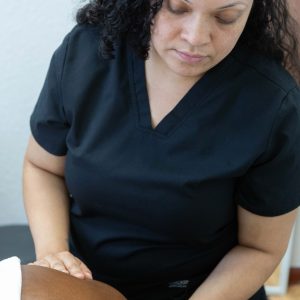
The massage therapist may feel stressed which is transmitted into the massage you’re paying for; but usually stay silent out of a sense of guilt. The baby may cry more than you expect. Time flies as you juggle comforting your child and settling onto the therapy table, suddenly, session you paid for is over and you barely feel any better. Frustrated, you pay the therapist for their time, all while attempting to soothe a screaming baby in the background or in your arms. The average postpartum family rarely has a home space created for relaxation. More often than not, well intentioned visitors family are dropping by and they may want to get a massage as well. Which could place you in an awkward position.
Boundaries are challenging for most postpartum parents to keep, you are not alone. I often remind people that a massage is a professional health care service. Your body needs physical care and that requires focus from your therapist to do the best job possible. It may seem helpful when your therapist stops to carry your child to soothe them in their arms as you rest; but unless you both have agreed the visit required additional services, this is outside of the work you’ve paid them for. When you visit a facility for your postpartum massage you don’t have to clean or tidy up before the therapist arrives. The place where you’re going is already calm, clean, sanitized and free from disruption, which is what you need the most.
As a new mother, your hormones often trigger strong emotions and an environment away from home that was designed to make you feel safe and nurtured; as well as get the muscle tension relief you need all need to take place. Your massage space needs to be a symphony of quiet and peace and that will rarely happen in a home with a new born baby. Your strong motherly instincts will kick in, and you will interrupt your massage at the slightest whimper of your little one. Massage is a healing one-to-one experience between you and your therapist. It is your sacred time to rest in all aspects, mentally and physically.
You may not be able to connect your body well and give feedback if your baby is in the background. Mothers that practice self-care and healthy boundaries know this and plan accordingly. Organizing child care for your own care is worthy of being considered. Peace and quiet are needed for you, for a brief period of time and a quiet space for massage can give that to you. If you cannot leave your child because it causes to much anxiety speak with a mental health provider about your support system after birth.
Belief systems about being a bad mother when you take a small fraction of the day to care for yourself may be deeply ingrained from your family history . Messages of being selfish may be sent to you by critical in-laws or relatives that never took the time to care for themselves after birth. Expect the backlash but stand up for yourself and be your own advocate for postpartum recovery. When you return to your baby you will feel more refreshed and the more you nourish yourself the higher quality care you can give to your child for decades to come. We have seen many mothers visit for a postpartum massage after passing through that mental hurdle and feel all the better for it.
Pelvic Floor Massage
Pelvic floor muscles that are tense can be released during pregnancy for prevention and pain relief. However,it is in postpartum where the true recovery may begin. The woman no longer has the weight of the baby, placenta and all the extra fluids that she carried before. After birth, the body continues to feel the affect of that strain. Massage is appropriate to release certain tight muscles of the pelvic floor when there is pain from tension. Some women have urinary incontinence where these muscles are weak. A symptom is urinating slightly when laughing, coughing or sneezing. A weak muscle requires strength and toning, a tight muscle needs to be relaxed.
Some women feel the pressure to return to sexual intercourse with their partner after birth. When sex is painful, this has to be addressed. For the purpose of massage and manual therapy we will assume the case is for severe muscle tension causing pain. Working in this area of the external pelvic floor may feel invasive. Good communication and the ability to feel in control is important when this area is being given massage.
The coccygeus and levator ani muscles are the primary region where the muscles would be in a state of spasms. The illiococcygeus and pubococcygeus, the pubovaginalis (female) and the puborectalis. The illiococcygeus muscle inserts on the side of the anal canal towards the coccyx and sacrum.
A word about sexual arousal. The bulbospongiosis muscle inserts along the clitoris and despite it being part of the urogenital triangle and part of the pelvic floor muscles.
Pelvic floor therapy is just one way that licensed massage therapists play a role in the recovery during the postpartum period.
